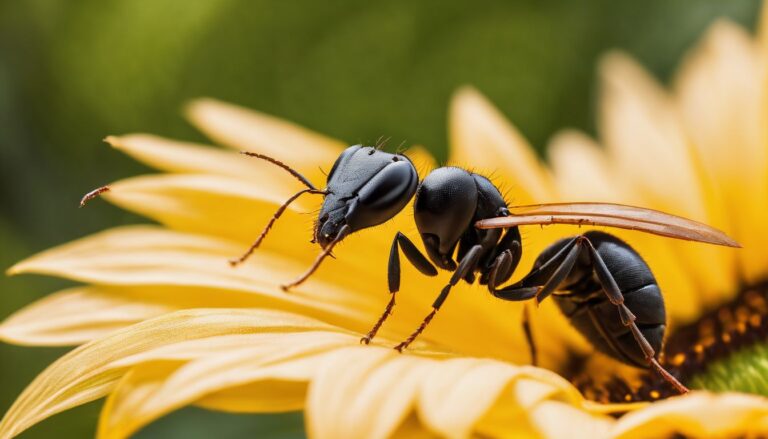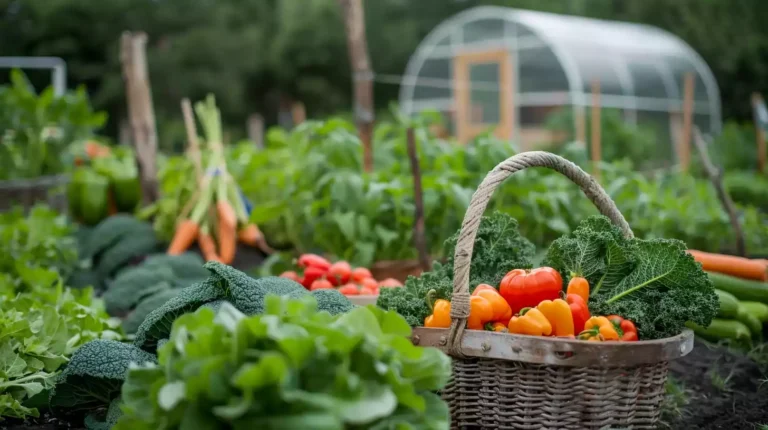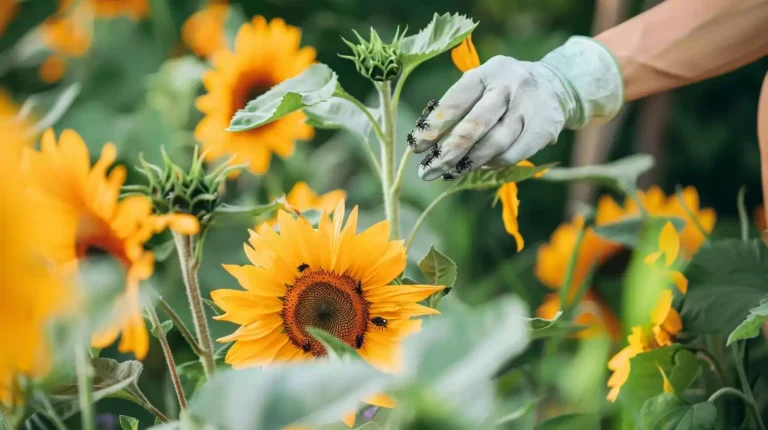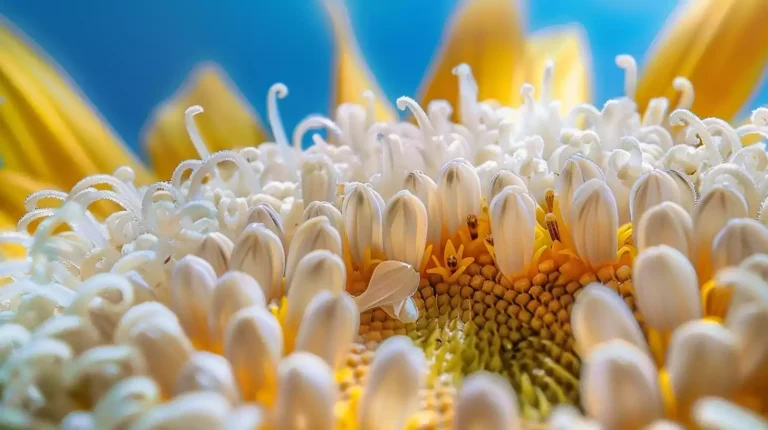Why are My Sunflower Leaves Turning Brown? (Reasons & Prevention!)
I remember the morning I noticed the first brown spots on my sunflower leaves, a problem that seemed to appear overnight. As a professional horticulturist, I knew that sunflower leaves turning brown could signal a range of potential issues, from the mundane to the serious.
It could be as simple as a lack of water or as complex as a fungal infection, each requiring a different approach. In my experience, pinpointing the exact cause is crucial, as it dictates the steps needed to salvage not just one plant, but potentially an entire crop.
So join me as we explore the various reasons behind this common gardening quandary and uncover the methods to prevent it, ensuring that your sunflowers remain as vibrant and healthy as possible.
Continue Reading to Understand These Key Points:
- Fungal diseases, such as Septoria leaf spot, overwatering, and insufficient drainage can cause brown spots on sunflower leaves.
- Pests like beetles, aphids, mites, and glassy-winged sharpshooters can also lead to brown spots on sunflower leaves, and they may introduce pathogens that worsen the situation.
- Environmental stress factors like extreme temperatures, poor air circulation, air pollution, chemical residues, and strong winds can contribute to leaf browning.
- Nutrient deficiencies, particularly nitrogen, potassium, and magnesium deficiencies, can result in chlorosis, leaf browning, and curling. Regular soil testing and balanced soil nutrients are important for preventing nutrient deficiencies.
Identifying Common Diseases
https://www.youtube.com/watch?v=U1HIvXkb9ig
To effectively manage the health of sunflowers, it’s crucial to accurately identify and understand the common diseases that manifest as browning on the leaves.
Brown spots on sunflower leaves can stem from a multitude of factors, including fungal diseases fostered by overwatering and inadequate drainage. These conditions are prime for diseases such as Septoria leaf spot, which is characterized by necrotic spots surrounded by yellow haloes.
This fungal pathogen thrives in wet conditions, emphasizing the importance of maintaining proper soil moisture levels.
Excessive fertilizer application can lead to leaf tip burn, a condition where the tips of the leaves turn brown due to nutrient toxicity or water stress. On the other hand, insufficient watering can predispose the plants to fungal wilting, where the foliage may also exhibit browning.
Monitoring and managing soil pH with organic fungicides can mitigate the risks associated with high soil pH and pathogens.
Leaf spots from beetle damage, infestations by pests such as the glassy-winged sharpshooter, and fungal diseases like sunflower rust, powdery mildew, and downy mildew can all result in the browning of sunflower leaves.
A detailed analysis of these symptoms and the environmental conditions is essential for accurate diagnosis and effective disease management.
Environmental Stress Factors
While it’s important to recognize common diseases in sunflower crops, attention must also be given to how environmental stressors such as extreme temperatures and insufficient air circulation can lead to the browning of sunflower leaves.
It’s not solely pathogens or pests at fault; often, it’s the environment where sunflowers are cultivated that can induce stress, resulting in the browning and wilting of leaves.
Here are the key environmental stress factors to be aware of:
- Extreme Temperatures: Sunflowers flourish in direct sunlight and warm temperatures, but excessive sunlight or extreme heat can cause leaves to scorch and turn brown. On the flip side, unexpected cold spells can harm plant tissue and cause similar discoloration.
- Poor Air Circulation: Proper airflow is essential to deter fungal growth and to enable plants to transpire efficiently. If sunflowers are grown too close together or in areas with little air movement, the likelihood of leaf browning increases.
- External Factors: Air pollution, chemical residues, and strong winds can inflict physical damage or introduce toxins, both of which can lead to the browning of sunflower leaves.
For gardeners or farmers, closely monitoring growing conditions and reducing these environmental stresses is crucial for maintaining healthy sunflower crops.
Pest-Related Issues
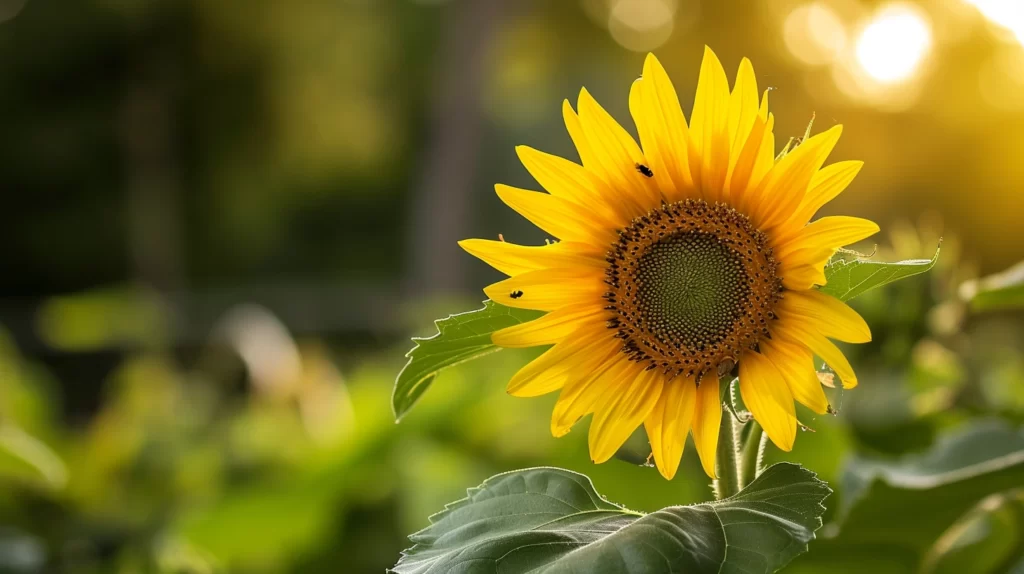
Pest infestations, such as aphids, mites, and beetles, can cause significant damage to sunflower leaves, often resulting in the emergence of brown spots and compromised plant health.
The presence of these pests is not just a superficial issue; they can introduce pathogens that persist on the plants, worsening the situation. For example, glassy-winged sharpshooters lay eggs on the foliage, and their feeding activity can leave brown necrotic areas.
An in-depth analysis of these pest-related issues reveals that the life cycles of these pests, including the laying of eggs and subsequent larval feeding, are critical in the manifestation of symptoms on infected plants. The table below summarizes the common pests and their impact on sunflower leaves:
| Pest | Damage Caused | Control Measures |
|---|---|---|
| Aphids | Suck sap and leave brown spots | Insecticidal soaps |
| Mites | Cause discoloration and brown spots | Miticides |
| Beetles | Chew leaves and lay eggs leading to brown spots | Systemic insecticides |
| Glassy-winged Sharpshooters | Lay eggs and transmit pathogens | Insecticidal oils |
Implementing robust monitoring and early detection strategies is very important to mitigate these pest-related issues. An integrated pest management approach that combines biological, cultural, and chemical controls is paramount in maintaining the health of sunflower crops and preventing the browning of leaves due to pests.
Nutrient Deficiencies Impact
Beyond the direct damage caused by pests, nutrient deficiencies in the soil can also present as brown spots on sunflower leaves, signaling an imbalance that may weaken plant vigor and resilience. Understanding the scientific aspects of nutrient deficiencies is key to grasping their impact on the overall health of a sunflower.
- Nitrogen Deficiency: A shortage of nitrogen can cause chlorosis, where leaves turn yellow before advancing to brown as the tissue dies. This can drastically reduce photosynthesis, stunting growth and weakening the plant’s defense mechanisms against sunflower diseases.
- Potassium Deficiency: Insufficient potassium can lead to leaf edges browning and curling, making the plant more susceptible to both environmental stresses and fungal diseases. Potassium plays a crucial role in regulating water and nutrient transport within the plant.
- Magnesium Deficiency: This element is essential for chlorophyll. Without adequate magnesium, leaves might show interveinal chlorosis followed by browning, hampering photosynthesis and energy production.
To prevent sunflower leaves from turning brown and to ensure a healthy sunflower, it’s critical to conduct regular soil testing.
This allows for accurate adjustments in fertilization to maintain balanced soil nutrients, effectively reducing the risk of nutrient deficiencies and strengthening the plant’s ability to resist pathogens and pests.
Effective Prevention Strategies
To safeguard sunflower foliage from browning, it’s essential to establish an effective watering regimen, ensuring the soil is moist but not waterlogged to prevent the onset of fungal diseases.
Precise irrigation practices are crucial to circumvent both underwatering, which can induce drought stress, and overwatering, which often leads to conditions favorable for fungal wilting. I focus on maintaining a balance where the soil exhibits adequate moisture without becoming a breeding ground for pathogens.
High-quality soil is critical in preventing leaf diseases. By enriching the soil with necessary nutrients, I create an environment where sunflowers can flourish, reducing the risk of nutrient deficiencies that may appear as brown spots on leaves. Sufficient drainage is also vital to thwart waterlogged conditions conducive to fungal growth.
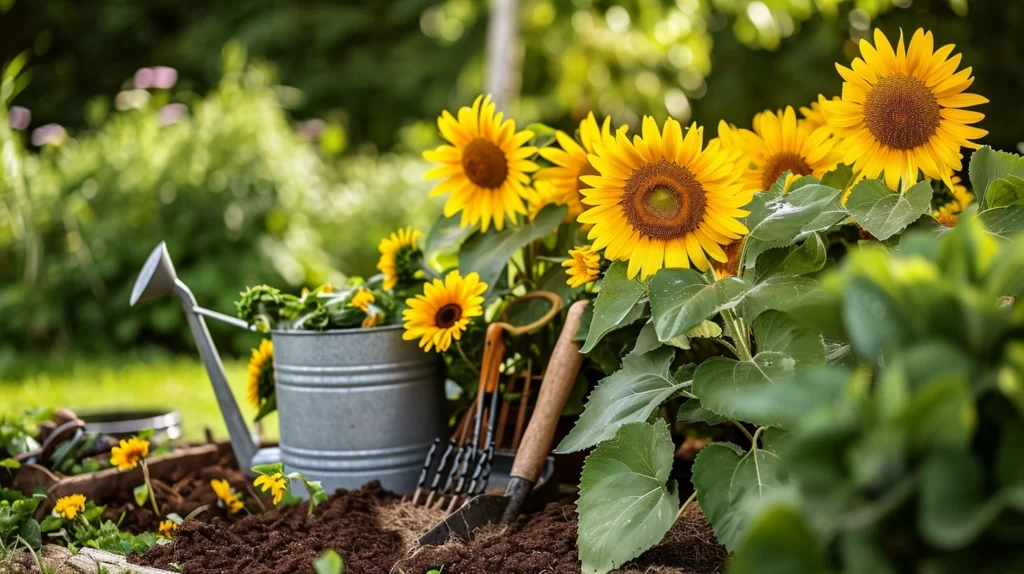
Regular monitoring for pests and immediate intervention upon detection helps to prevent them from causing damage that can result in leaf browning.
Ensuring enough water, but not in excess, is a delicate but necessary practice for healthy sunflower cultivation. Providing some shade during the most intense sunlight hours can protect the leaves from potential sunburn, another factor contributing to browning.
Through these analytical and proactive measures, I’m able to maintain the vitality of my sunflower plants.
Final Thoughts
So there you have it, after all my meticulous care, it seems my sunflowers were destined to flaunt a bit of brown after all. Who knew the quest for verdant leaves would lead me down such a path of fungal foes and nutrient nuances?
But fear not, fellow gardeners, for armed with this newfound knowledge, our next sunflower showdown will surely end in a green-thumbed victory.
Until then, let’s toast to the bittersweet beauty of our less-than-perfect blooms.

